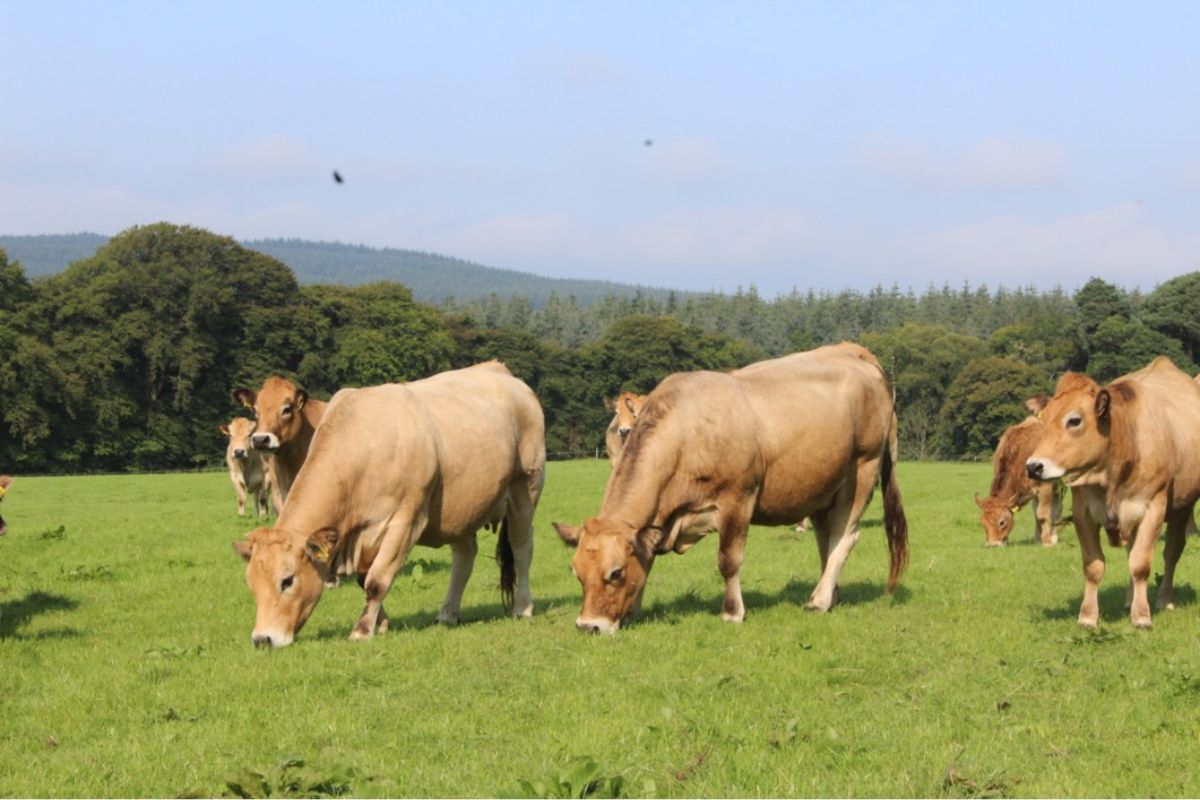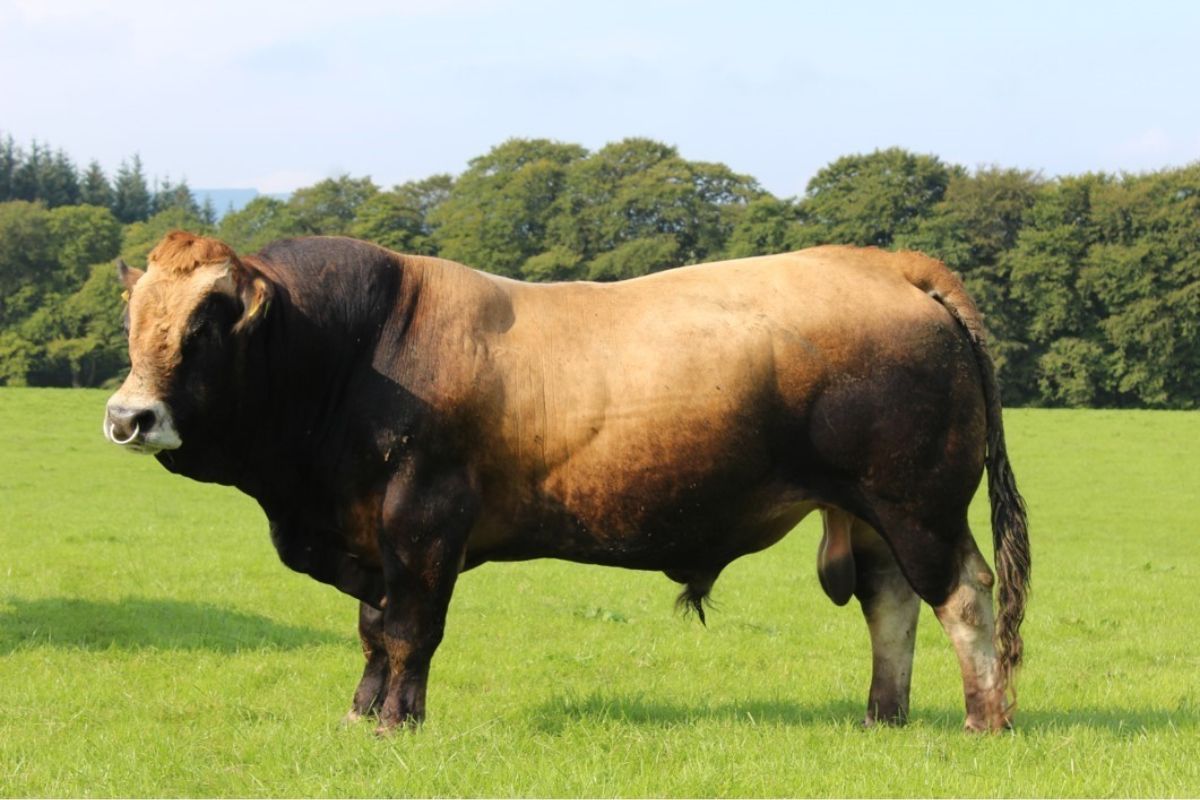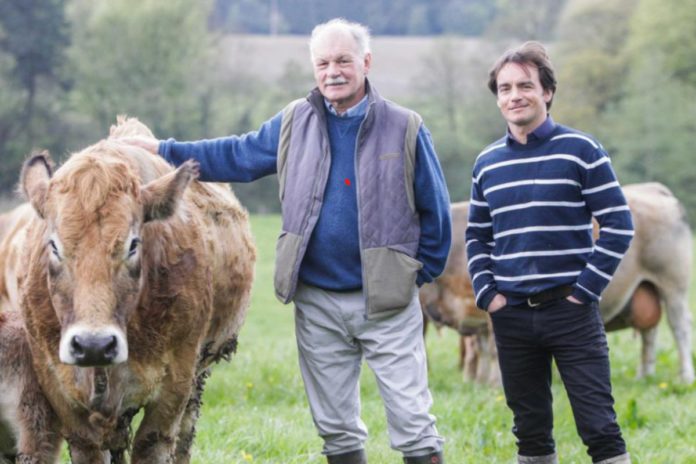In this week’s Suckler Focus, That’s Farming, speaks to Ernest and Lionel Mackey from Ballinclea Aubracs about converting to organics.
Lionel and Ernest Mackey farm their 81-cow Ballinclea Aubrac herd across 145-acres in Donard, County Wicklow.
In the mid-1990s, they converted to organics through a Department of Agriculture, Food, and the Marine financial aid package.
Ernest told That’s Farming why they switched from a conventional system:
“I had been considering changing to organic status for some time. In the mid-nineties, I was concerned about the possible impact sprays were having on our food – especially when I could see the skull and crossbones on the tins.”
“I was in REPS at that time. There were good financial aids for the two-year conversion period, and this helped to make up my mind.”
“Overall, it was a decision made from the heart and not for financial reasons. It is now very much normal practice for Lionel and I.”
Why Aubracs?
Lionel and Ernest’s objective on the farm is to produce “highly bred Aubrac stock from successful bloodlines from the original Batifol herd in France”.
“We bought the cows originally from a Batifol herd in France originally in France. Out of the original 20 cows bought in, there were four cows that stood out.”
“We kept the successful stock from over the years. They are Ballinclea Shania, our show cow, Ballinclea Sarita, Ballinclea Sorcha and Ballinclea Sabrina.”
“We love the Aubrac breed for many reasons, including docility, ease of calving, milking ability, weight gain, and confirmation. They are a lovely looking breed and are easy to handle and are like big pets”
“My father does the day-to-day farming, herding, fencing, and looking after the cattle. I look after the financial end with the paperwork and the cattle sales,” Lionel added.

The ideal cow and myostatin testing
Lionel outlined his ideal Aubrac cow and how he selects breeding females based on traits.
“Our ideal cow type would have the following: great milking ability, docile, easy calving, good feet, straight back, good length and depth, good condition muscular but not overly so.”
“We prefer to see the cows put the condition into the calves and tight gestation periods, high fertility, high ICBF indexes, star ratings, and high replacement indexes.”
Commenting on longevity in the herd, he said. “We have successfully had Aubrac cows that calved until 16 years of age. All our herd is myostatin tested, meaning we know what genes the cattle have.”
“Most of the herd has the F94L gene, which is a very favourable gene. From our experience, this gene type leaves stock that is muscular yet not overly so, with great milking ability.”
“We have some cattle in the herd with the NT821 gene. Having some of this gene is beneficial – especially for terminal figures and muscle. However, having double of this gene can result in over muscular calves and hard calving.”
“The ideal genes for our herd are either two of the F94L gene or 1/F94L and 1/NT821, which leaves a muscular animal yet not overly so, with good milking ability and easy calving.”

Breeding programme
Calving takes place on Ballinclea Farm over three months, from January to March. “The earlier, the better; it means I have strong bulls to sell in spring for the following year.”
The breeding strategy on the farm takes the form of both AI and the use of a stock bull. In the past, they have used AI sires including Jintou, Obelix, Perlou, Roussel, and Remus.
“We have used a lot of AI over the years. However, we always prefer to buy in top-rated bulls from France or buy in AI bulls from the likes of ICBF.”
“Our current bullDe Butler Mayo is an Obelix son (AI bull). Our last bull was AI bull, Calverstown Koala. He was the 2016 ICBF AI bull, and before that, we bought in a highly-rated bull from France.”
Lionel explained the system on the Wicklow-based farm for progeny.
“We keep all the bulls and generally sell them from 12 months to 18-months-old. We keep 3 to 5 heifers per year for ourselves as replacements. When they calve, we cull out and sell older cows with calves at foot.”
“All our bulls are mainly sold to dairy farmers, with the remainder sold to other pedigree breeders and mixed suckler farmers.”

Awards and a bull in AI
The Mackeys received significant recognition for their pedigree breeding efforts, securing a bull into AI and scooping prestigious silverware.
“In 2014, one of our bulls, Ballinclea Iveco, was selected for the ICBF AI bull breeding programmeIn 2015, we won the champion of champions from the RDS with one of our cows, Ballinclea Babette.”
“In 2015, we had seven cows from our herd in the top twenty of the highest-rated replacement index Aubrac herds in Ireland with our old show cow, Ballinclea Shania, being number one with a replacement index of €251.”
Future
Lionel and his father, Ernest, intend to continue breeding their organic 81-cow pedigree Aubrac herd.
They believe that into the future there will be a greater push to encourage farmers to convert to organic systems.
“I feel there will be more incentives from the EU for converting to organic in the future plus more grants for biodiversity.”
“We are surviving as we are getting a premium price for pedigree stock without incurring big amounts of cost.”
“For traditional suckler farmers, the costs are high, yet the return on their sales are generally low. Something drastic needs to happen for suckler farmers to stay at it long-term.”
“My partner and I currently setting up a woollen mill to process wool and create a fair-trade network for Irish sheep farmers. We aim to help put a value on Irish wool again.”
Concluding, Lionel outlined what it takes to become a successful pedigree breeder, Lionel said. “Plenty of grass, plenty of milk, keeping costs low and attaining good prices for your stock.”
To share your story like Ballinclea Aubracs, email Catherina Cunnane, editor of That’s Farming, – [email protected]





